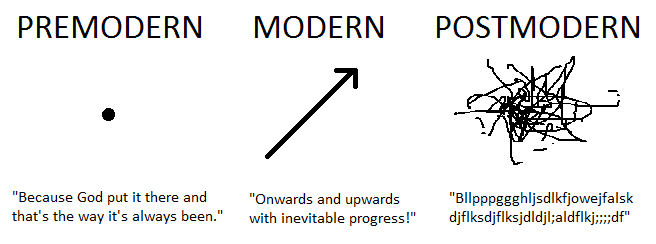Music Videos are often examples of postmodern media, not only because their place as a recognised art form has come about in the postmodern era but mainly because they evidence a range of ideas about what makes a text postmodern.
Intertextuality
- Pastiche – use of a previous text as the basis for the whole music video – in the style of
- Parody – making fun of a previous text
- Homage and Quotation – sampling
- Weaponised intertextuality – those deliberate Easter Eggs – we will look more closely at Ariana Grande and This is America as a detailed texts later in the term.
Bricolage – a melange, mixture of styles – cartoons, animations, dance, drama, acting, documentary, other footage.
Self-referential – this is a music video (think of Katy Perry winking at the end of xxx) – let’s draw attention to its own construction.
They manipulate time and space – flashbacks, incomplete narratives usually present and they often challenge the grand narratives (more on this later) – there is not always a happy ending, a dominant male, success after working hard for a living.
Play with the relationship between audience and text – breaking the 4th wall and there is often a presumption they are culturally competent, deliberately playing with their expectations.
Play with the distinction between reality and representation.
They blur the lines between high art and what is considered low art.
Examples:
See how many intertextual references you can see in this Taylor Swift video.
Poppy is a social media phenomena who not only makes her own fascinating blog posts but also sings and creates music videos. This one is particularly self-referential and deliberately questions the music industry.
The 1975 are a really interesting band. The approach their music with a wry sense of intellectual cyncism and often end up evidencing postmodern trends in their work. Here is Matty Healy talking us through his music videos.
Here is one example in full.
This music video is self-reflexive. Draws attention to itself in a shameless way. Pokes a finger up at celebrity culture – he ‘ribs’ himself about his celebrity lifestyle. Read this Article for more background.
Top 10 Music Videos inspired by Movies: they are all examples of how music videos pastiche, parody previous texts. Again, you have to be culturally competent to ‘get it’ but you could also argue it is singers being lazy and unimaginative – why not just copy someone else’s art?
Andrew Goodwin, a renowned media theorist sums up the postmodernism of music videos:
- Blurs high art and low art – it is media for everyone with no boundaries.
- Abandons/challenges grand narratives – incomplete narratives, no sense of resolution, rejection of the overarching ideologies of society/history – love conquers all, men are the breadwinners, god is the answer etc.
- Intertextuality – borrows from other texts; deliberately, unknowingly, alludes to, knowing nod to – all of which fits with Jameson’s ideas on ‘nothing new, a flatness’ or as he puts it ‘blank parody’.
- Loss of Historical reality – pastiche and intertextuality blur history and chronology so that conventional notions of past, present and future are lost in a melange of images, all of which appear to be contemporary.




